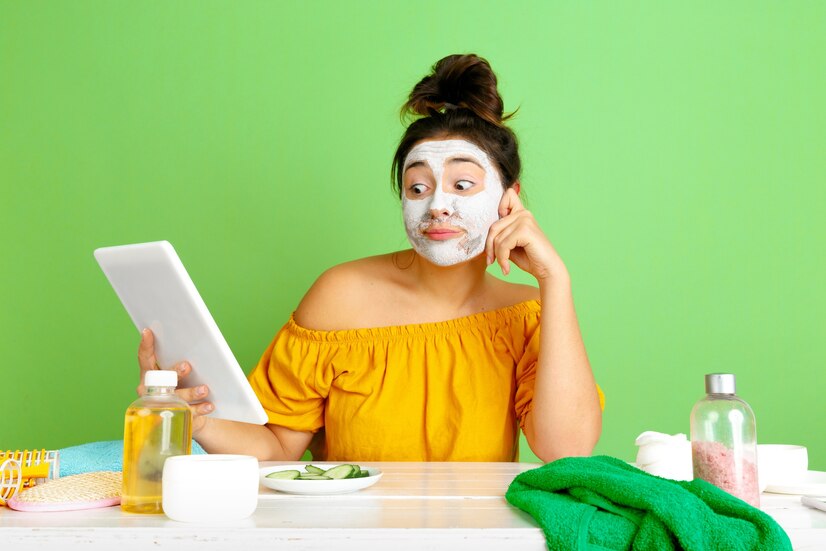In the quest for flawless skin, many of us find ourselves obsessing over pore size and texture. We search for ways to minimize the appearance of pores, often trying various methods and products. The truth is, while you can’t entirely erase pores—those essential tiny openings that help our skin breathe and release natural oils—you can take steps to prevent them from becoming clogged. This is where a pore clogging checker comes into play.
In this article, we’ll explore what pore clogging checkers are, why they matter, and how you can use them effectively to make informed skincare choices. Let’s dive into the world of skincare and discover how these tools can help you achieve clearer, healthier skin.
What is a Pore Clogging Checker?
A pore clogging checker is an online tool or database designed to evaluate the potential of skincare and cosmetic products to clog pores, which can lead to acne and breakouts. These tools analyze the ingredients in products and rate them based on their likelihood to cause pore blockages. They serve as a valuable resource for anyone looking to avoid products that might exacerbate skin issues.
How Does a Pore Clogging Checker Work?
Pore clogging checkers operate by assessing the ingredients list of a product. Many of these tools use established databases and scientific research to identify which ingredients are known to clog pores. They typically categorize ingredients into various levels of comedogenicity—ranging from non-comedogenic (unlikely to clog pores) to highly comedogenic (likely to clog pores).
Why Use a Pore Clogging Checker?
Preventing Acne and Breakouts
One of the primary reasons to use a pore clogging checker is to help prevent acne and breakouts. When pores become clogged with oil, dead skin cells, or other debris, it can lead to the formation of pimples, blackheads, and other types of acne. By choosing products that are less likely to clog your pores, you can reduce your risk of developing these skin issues.
Tailoring Your Skincare Routine
Knowing which products are safe for your skin type allows you to tailor your skincare routine more effectively. Whether you have oily, dry, or combination skin, a pore clogging checker can help you select products that align with your skin’s needs and minimize the risk of adverse reactions.
Making Informed Choices
With the abundance of skincare and cosmetic products on the market, it can be overwhelming to make informed choices. A pore clogging checker provides valuable insights into which products are less likely to cause issues, empowering you to make decisions based on scientific data rather than marketing claims.
How to Use a Pore Clogging Checker
1. Understand Your Skin Type
Before using a pore clogging checker, it’s important to understand your skin type and concerns. Different skin types react differently to various ingredients. For example, individuals with oily skin may be more prone to breakouts from certain ingredients, while those with dry skin might react differently.
2. Research Trusted Checkers
There are several pore clogging checkers available online, each with its own database and methodology. Some popular options include:
- Comedogenicity Databases: These databases provide information on how likely different ingredients are to clog pores.
- Ingredient Analysis Tools: Some websites and apps allow you to input the ingredients of a product to receive a comedogenicity rating.
3. Check Product Ingredients
When using a pore clogging checker, you’ll need to input the ingredients list of the product you’re interested in. Some tools allow you to search by product name, while others require you to manually enter the ingredient list. Make sure to use a reputable checker that is up-to-date with current research.
4. Interpret the Results
Once you receive the results from the checker, it’s important to interpret them correctly. Look for ingredients that are flagged as highly comedogenic and consider avoiding products with these components. However, remember that individual reactions can vary, so it’s also helpful to monitor how your skin responds to new products.
5. Adjust Your Routine
Based on the information from the pore clogging checker, adjust your skincare and cosmetic routine as needed. Opt for products that have lower comedogenic ratings and are suitable for your skin type.
Common Ingredients to Watch Out For
Certain ingredients are more likely to clog pores than others. Here are some common ones to be cautious of:
1. Silicones
Silicones, such as dimethicone and cyclopentasiloxane, are often used in cosmetics to create a smooth texture. While they can make your skin feel silky, they can also trap oil and debris, potentially leading to clogged pores.
2. Mineral Oil
Mineral oil is a common ingredient in moisturizers and lotions. It forms a barrier on the skin that can trap oil and sweat, increasing the risk of pore blockages.
3. Lanolin
Lanolin, derived from sheep’s wool, is a moisturizing agent found in many skincare products. It can be comedogenic for some people, particularly those with sensitive or acne-prone skin.
4. Coconut Oil
While coconut oil is praised for its moisturizing properties, it is also known to be highly comedogenic for many people. It can clog pores and exacerbate acne.
5. Isopropyl Myristate
Isopropyl myristate is used to enhance the absorption of other ingredients in skincare products. However, it can also clog pores and cause breakouts in some individuals.
The Pros and Cons of Pore Clogging Checkers
Pros
- Informed Decision-Making: Helps you choose products based on their comedogenicity, reducing the risk of breakouts.
- Personalized Skincare: Assists in tailoring your skincare routine to your specific skin type and needs.
- Educational Resource: Provides valuable information about how different ingredients affect your skin.
Cons
- Generalization: Pore clogging checkers provide general information, but individual reactions to products can vary.
- Inaccuracy: Not all checkers are equally reliable, and some may not be updated with the latest research.
- Over-Reliance: Relying solely on a checker without considering other factors, such as overall skincare routine and lifestyle, may not address all skin issues.
Additional Tips for Healthy Skin
While pore clogging checkers are a useful tool, they are just one part of maintaining healthy skin. Here are some additional tips:
1. Maintain a Consistent Routine
Consistency is key in skincare. Follow a routine that includes cleansing, exfoliating, and moisturizing to keep your skin healthy and balanced.
2. Choose Non-Comedogenic Products
Opt for products labeled as non-comedogenic, which means they are formulated to minimize the risk of clogging pores.
3. Stay Hydrated
Drinking plenty of water helps keep your skin hydrated from the inside out, which can improve its overall appearance and function.
4. Avoid Touching Your Face
Touching your face frequently can transfer bacteria and oils from your hands, potentially leading to breakouts.
5. Consult a Dermatologist
If you have persistent skin issues or need personalized advice, consider consulting a dermatologist who can provide expert guidance tailored to your needs.
Conclusion
Navigating the world of skincare can be complex, but understanding how to use tools like a pore clogging checker can significantly simplify the process. By assessing the ingredients in your skincare and cosmetic products, you can make more informed decisions and reduce the risk of clogged pores and breakouts.
Remember, while pore clogging checkers are a valuable resource, they are just one part of a comprehensive skincare strategy. Combine them with good skincare practices, a healthy lifestyle, and professional advice to achieve and maintain clear, healthy skin. So, the next time you’re considering a new product, use a pore clogging checker to ensure it aligns with your skincare goals and enjoy a smoother, more radiant complexion.







